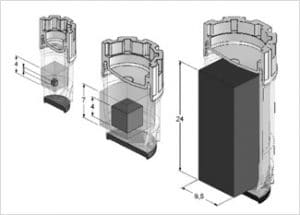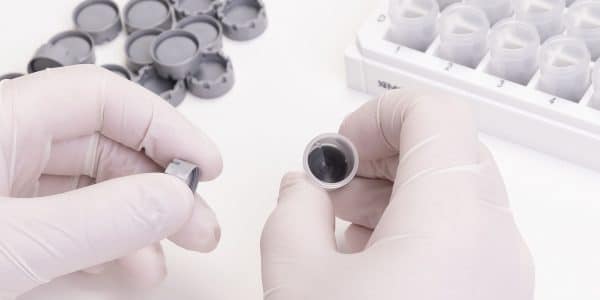

Considering tissue sample and tube size for safe preservation
A common belief is that the bigger the tissue sample the better, however it does depend on the end-use. For example for -omics research, it does not matter whether the tissue morphology is destroyed. However, storing a large piece of tissue for -omics applications is wasteful considering the high Dollar/research value of the specimen and tissue degradation that occurs at partial thaw of the sample to acquire a subsample from a larger piece. A tissue sample is thawed from -80ºC to -20ºC to cut a section and the remaining tissue goes back in the -80ºC freezer. This immediately produces ice artifact, making the specimen unsuitable and of lesser quality quite quickly. Storing in O.C.T. slows desiccation but does not stop ice artifact in the tissue which causes damage.
In order to prevent wastage or desiccation, spare volume inside the tissue storage tube should be avoided. This means that for each size of tissue sample, a corresponding storage tube size needs to be used.
For instance the most optimal tubes for small -omics research samples have a volume of 0.50ml to 2.00ml. Micronic, innovator in sample storage, addresses this need by offering a line of tissue storage tubes in various sizes. The smallest tube can hold tissue samples with a maximum size of 0.4 x 0.4 x 0.4cm. The largest tube can store samples with a maximum size of 1.0 x 1.0 x 2.4cm. Using the line of Micronic tissue tubes enables research labs to standardize and automate the storage of fresh frozen tissue samples. The tubes are provided with a 2D Data-Matrix code on the bottom for complete traceability, and are available in a 1D barcoded ULT rack based on the automation-friendly ANSI/SLAS rack format.


